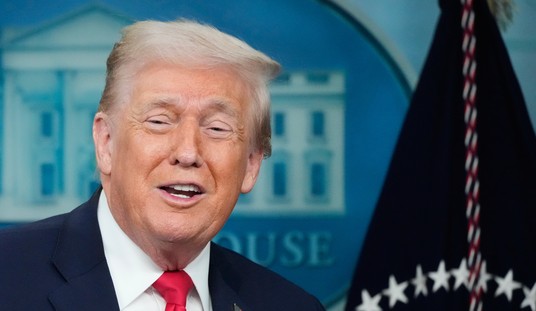Why is an easy question to answer. Why now is a little more difficult. Barack Obama and Hillary Clinton both launched efforts to get Congress to revive the “public option” for ObamaCare, claiming that a lack of competition makes it increasingly difficult for consumers to find health insurance. The Hill reports that not all Democrats have much enthusiasm for this argument, however:
The idea of adding a government-run insurance option to compete with private insurers is making a comeback in the Democratic Party, with President Obama endorsing the idea Monday, two days after presumptive Democratic presidential nominee Hillary Clinton emphasized a public option as part of an effort to win over Bernie Sanders and his supporters after a contentious primary.
But among more centrist members of the Senate, where the “public option” was stopped in 2009, there is little enthusiasm for the idea.
So who has cold feet? Some of the usual suspects, such as Heidi Heitkamp and Joe Manchin, two Senators from conservative states. But The Hill’s Peter Sullivan also reports that swing-state Senators Joe Donnelly (IN), Bill Nelson (FL), and Mark Warner (VA) aren’t terribly keen on answering questions about it.
Even Tom Carper from solidly-blue Delaware put off responding to the idea until he sees a concrete proposal — and hinted that he won’t consider any additions to ObamaCare that require a party-line vote to pass:
“I had not heard that, so let me just take a look at it,” Carper said. “When we passed the Affordable Care Act, unfortunately we had to do it very much on a party line vote, and it’s unfortunate, because if it had been a bipartisan bill, it would have been better, I think.”
Correction: If it had been a bipartisan bill, the blame for the failure would have been easier to spread around.
The irony of floating this proposal now is that recent events proved what a disaster the public option would have been. In my column for The Fiscal Times, I argue that demanding a public option after the collapse of the federally subsidized co-ops is akin to prescribing a second iceberg to rescue the Titanic:
Unfortunately for Obamacare cheerleaders, almost every co-op has hit their own icebergs over the past year. In the past two weeks alone, two of the few remaining (in Oregon and Illinois) have closed their doors, leaving both patients and providers in the lurch. They have blamed a decision by Congress to limit risk-corridor payouts to taxes collected on “excess profits” by other insurers, but that acknowledges a core criticism of the public-option concept: they are incapable of sustainable operations without large infusions of federal subsidies.
As critics predicted in 2009, the public option in the form of co-ops turned out to be unsustainable. The biggest problem for Obamacare advocates is that they turned out to be far less sustainable than private-sector insurance, even under the onerous conditions imposed on insurers in the ACA’s mandates. The icebergs turned out to be so large that the government’s ships sunk immediately without general-fund dollars to keep them afloat, making arguments that the government could operate better than private-sector insurers [obviously false].
Even if we can’t find a good answer to the question why now, we already know the answer to why:
The argument for a public option now amounts to a back-door opening for the single-payer system that Democrats wanted all along. Unlike the co-ops, which didn’t have direct access to general-fund spending, public-option plans would allow the executive branch to direct funds on a nearly unlimited basis as an entitlement program, removing the barriers to a sea of red ink. All it does is rearrange the deck chairs on a sinking ship – and like the Titanic, there won’t be nearly enough lifeboats for the rescue needed from the coming disaster.








Join the conversation as a VIP Member